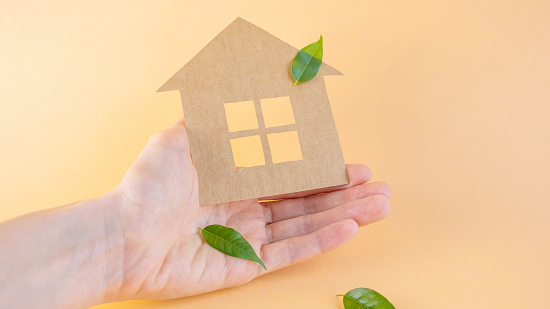Tips to Go Eco-Friendly with Your Home
| Thursday June 16Going eco-friendly with the way we live has become the only way out to sustain our lives and leave a similar, if not better, environment for our future generations. It shouldn’t have taken those movies and documentaries to change our mindset about the unusual and unfavourable phenomena happening around the world.
Nonetheless, we have, at least now, started to realise the pain our nature is in and is striving to keep her from any further agony.
Construction is one of the biggest ways we impact nature. With the population exploding at an exponential rate and the needs (which can be termed as ‘greed’ in many cases) ever-growing, going eco-friendly with the design of the construction can be one real and effective way to reduce carbon footprint.
So, if you are planning to construct your dream house, let the design be so that your successors and nature remain ever grateful to you.
- How big of a house do you need?
You must have saved up a good amount of your income to date for this very purpose and it is obvious and justified for you to dream of a luxurious home. The myth stands here. You do not need a humongous house to call it luxurious. A reasonably sized house with the right design and amenities can very well be your paradise. With this being said, the design should be flexible enough for you to adapt to future demands.
- Never reject the greens
This will be a great favour you will be doing yourselves. You are lucky if you get a plot of lush green trees and shrubs for your house instead of a clean shaved barren land. Take a vow to take down as few trees as possible while constructing the house. Letting one or two to encroach into your house plans will not be a bad option either.
- Let the skylights fall in
There is nothing better than natural. Why enclose yourselves in thick gloomy walls when you have such bright and white skylight to brighten up your house during the daytime? Keep the walls reserved only to the exterior where they are unavoidable. Generous window openings and skylights can be the source of light for much of your diurnal energy needs. Make sure to plan the windows on the right corner so as to protect your house from excess heat.
- Building and flooring materials
We do have plenty of options to choose from when it comes to building materials. Depending on the availability of the materials locally, the climate, and the durability, you can go for cement, ceramic, aluminium, glass or steel as the main raw material. Flooring is also an area you have umpteen options to choose from. From glossy vitrified tiles to hardwoods, from slate tiles to bamboos, flooring is now yet another element to create a style statement. But if it is the eco-friendly way you choose, it is definitely the laminated wood or bamboo that should cover the floor.
- Other elements
Eco-friendliness or sustainable construction is a holistic concept that goes beyond the realm of green construction. Right from the design to the construction and the ‘happily ever after’ stay in the house, the concept once adopted should be checked, revised and regularly maintained. Using energy-efficient LED lights, low VOC (volatile organic compounds), lead-free paints, and reclaimed materials for furniture and decorative items are some of the simplest ways to ensure that your house reveres nature and does its best to stay close to it.
- Green roofing
This is yet another amazing way of promising yourself a green future. Green roofing is nothing but covering the roof with green carpet or plants. Not only does this provide a happier look to the much-ignored roof of the house, but also helps drastically in maintaining the temperature of the interiors and reducing the consumption of electricity for heating or cooling the house. Apart from these, the green covering on the roof controls heavy storm water runoff.





